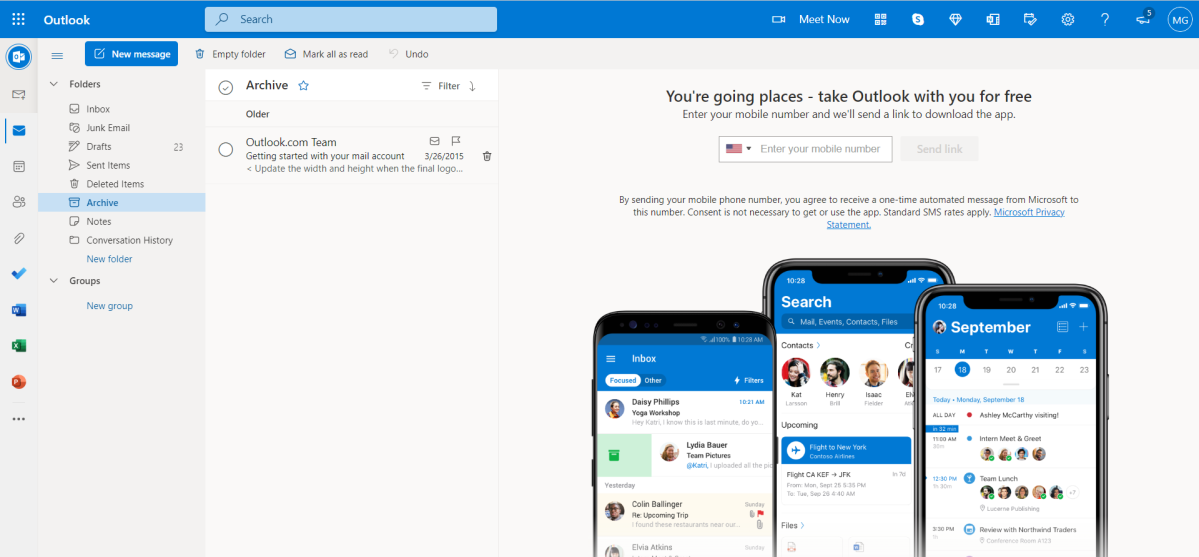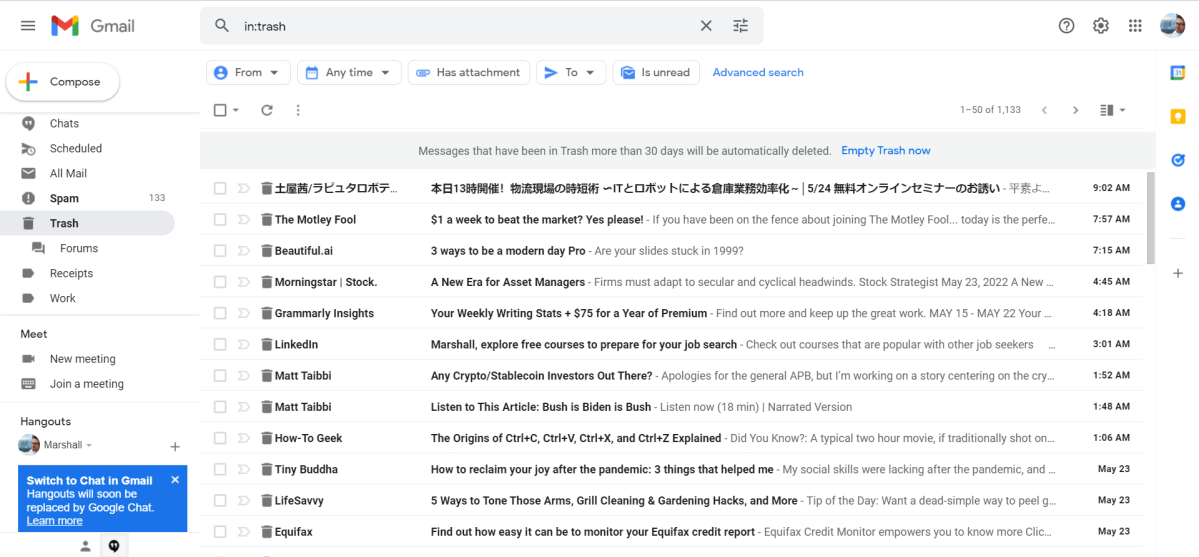Almost every email service provides the function to archive and delete emails. These two functions both remove emails from your inbox, but what happens after works differently. Knowing the difference can either save you a bit of storage or a major headache.
What happens when you archive an email?

The archived folder in Outlook
Marshall Gunnell
When you archive an email, it’s removed from your inbox. However, archived emails are still available to view. Where your archived emails are stored depends on which email service provider you’re using. For example, in Outlook, you can find archived emails in the “Archived” folder. In Gmail, you’ll need to select “All Mail” to view archived emails.
Archived emails will still use storage space. Depending on how much storage space your email service provider gives you, you may want to consider downloading your emails to your local machine or portable drive, or even sending them to a new account, and then deleting the emails.
What happens when you delete an email?

The trash folder in Gmail
Marshall Gunnell
Similar to archiving, when you delete an email, it’s also removed from your inbox. However, instead of storing the email in a special archived folder, the email is sent to the email’s trash bin. This folder is normally called “Trash” or “Deleted Items,” but may vary between services.
Whereas archived emails are stored in their respective folder indefinitely, deleted emails are stored in the email’s trash bin for a short period of time. The period of time the email is stored depends on your service provider, but most of the more popular providers keep emails in the trash bin for 30 days. After 30 days, the emails are (in most cases) deleted permanently.
Some services will store your deleted emails on their servers, even after you’ve “permanently” deleted them. For example, Google Workspace gives you an extra 25-day window to recover deleted emails. Google Workspace is a paid service, though, and you must be the admin in order to retrieve the deleted emails. Otherwise, you’ll need to contact the account admin.
Should you archive or delete emails?
After comparing the archive and delete functions, you may think always archiving emails is the way to go. However, if you archive everything, your email will quickly get cluttered, making it difficult to search for older emails should the need arise. So, for example, if you archive all of your old Amazon campaign special emails, when you try to search for the latest one, it could make it difficult to find.
Additionally, as mentioned before, archived emails still eats up storage space. Services like Gmail have a storage cap on their free storage tier. After you reach that limit, you’ll need to increase your storage capacity, which will cost you.
Related: Email overload? Clean your inbox with these 5 steps
On the flip side, deleting emails may save storage space and make your email search efforts a bit less painful, but once you delete an email, it’s gone for good (again, in most cases). That’s obviously not gonna be good if you ever find yourself needing to look back at an old email.
In general, archive emails that you think you may need to go back and look at in the future, and delete the ones you’re sure you’ll never need again.




